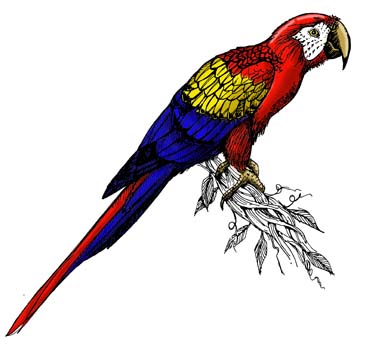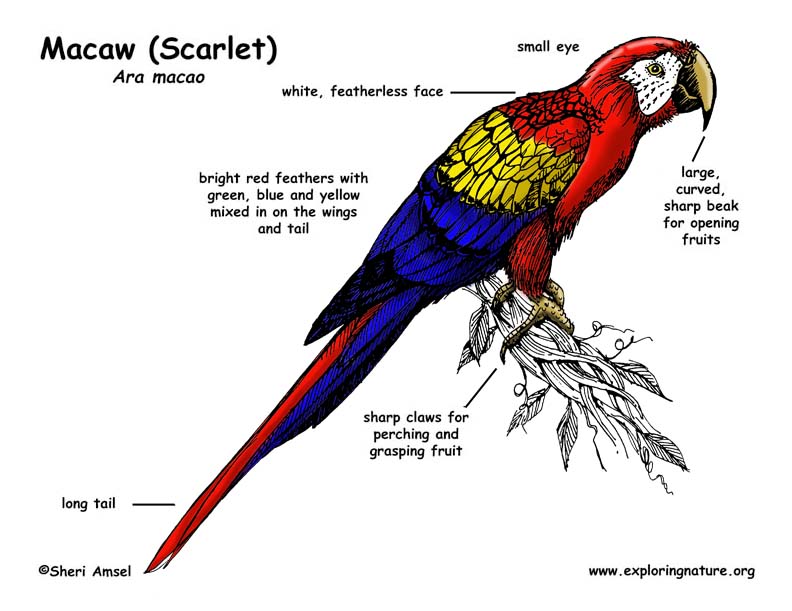

They are found in Central and South America.
They live in wild forests. They don’t do well in forests that are being cut down.
They are bright red, with yellow, blue and green wing and tail feathers. They have a white face. Their colors may vary throughout their range. They can be more than 30 inches long including their long tail. They have a large, curved, powerful beak for breaking through the husks of rainforest fruits. They also have sharp claws for plucking and holding the fruit while they feed and perch on branches high up in the forst canopy.
They are known for eating river clay. No one knows why for sure.
They eat fruit, nuts, flowers and flower nectar. They don’t spread seeds like some fruit-eating animals, but actually eat or destroy the seeds.
They nest in tree holes. The females lay 1 – 2 eggs.
Kingdom: Animalia
Phylum: Chordata
Subphylum: Vertebrata
Class: Aves
Order: Psittaciformes
Family: Psittacidae
Subfamily: Psittacinae
Genus: Ara
Species: A. macao
When you research information you must cite the reference. Citing for websites is different from citing from books, magazines and periodicals. The style of citing shown here is from the MLA Style Citations (Modern Language Association).
When citing a WEBSITE the general format is as follows.
Author Last Name, First Name(s). "Title: Subtitle of Part of Web Page, if appropriate." Title: Subtitle: Section of Page if appropriate. Sponsoring/Publishing Agency, If Given. Additional significant descriptive information. Date of Electronic Publication or other Date, such as Last Updated. Day Month Year of access < URL >.
Amsel, Sheri. "Macaw (Scarlet)" Exploring Nature Educational Resource ©2005-2024. December 14, 2024
< http://exploringnature.org/db/view/162 >

